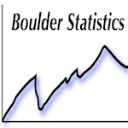- Subscribe to RSS Feed
- Mark Topic as New
- Mark Topic as Read
- Float this Topic for Current User
- Bookmark
- Subscribe
- Mute
- Printer Friendly Page
Discussions
Solve problems, and share tips and tricks with other JMP users.- JMP User Community
- :
- Discussions
- :
- Can I use JMP Reliability Demonstration for "non-reliability" situations?
- Mark as New
- Bookmark
- Subscribe
- Mute
- Subscribe to RSS Feed
- Get Direct Link
- Report Inappropriate Content
Can I use JMP Reliability Demonstration for "non-reliability" situations?
Hello.
My question is the following: We do a lot of pull force testing to assess weld strength, etc. Our specificaiton is 10lbs pull on an Instron pull test and is based on understanding the stresses the product undergoes in the field. When testing to failure, we often have to get to force values of 80 lbs before it breaks - which is actually a somehat dangerous test if somebody is standing next to the machine. In addition, there are several times that censoring occurs via breaking at a location other than the weld.
So, this is not a true 'reliaiblity' test as time/cycles aren't incorporated. It is more of a stress test. However, my question is can we still use the JMP reliability demonstration module for sample size?
Or is this significantly different than traditional reliability testing and therefore reliability demonstration (using Weibayes) is not inappropriate?
Thanks, Jim
Accepted Solutions
- Mark as New
- Bookmark
- Subscribe
- Mute
- Subscribe to RSS Feed
- Get Direct Link
- Report Inappropriate Content
Re: Can I use JMP Reliability Demonstration for "non-reliability" situations?
Let me add another thing. Using this approach you could stop the tests at a force below 80 and also treat the unbroken bonds as censored. Keep in mind that you probably want to stress the bonds to the point where some will fail. While it's possible to do an analysis with no failures, you'll probably have a better estimate if some items do fail.
Don
- Mark as New
- Bookmark
- Subscribe
- Mute
- Subscribe to RSS Feed
- Get Direct Link
- Report Inappropriate Content
Re: Can I use JMP Reliability Demonstration for "non-reliability" situations?
Jim,
I think the answer would be no. I have not used the reliability demonstration module so I am not familiar with the 'nuts & bolts" of the calculation, however, I think what you are doing would be different enough that the sample size from that module would no long be relavent. Hopefully someone else will chime in if they think differently. It sounds like you have a couple of measurements being taken as you do your testing. First is just the pass/fail of meeting the spec. That will have one sample size that is needed. Second you have the testing to failure, which will have a different sample size need. How you describe the testing to failure sounds like a lifetime model with censoring could be a reasonable way to analyze the data. Sample size calculations are always a headache (in my opinion). A non-theoretically based method would be to first figure out the best way to analze your results. Once you have that, take some of your allready collected data and simulate results from various size test sets and see at what data set size the confidence in your results "blow up" (where you will have to define what "blow up" means in terms of your risks, requirements, etc.).
Hope that helps.
Karen
- Mark as New
- Bookmark
- Subscribe
- Mute
- Subscribe to RSS Feed
- Get Direct Link
- Report Inappropriate Content
Re: Can I use JMP Reliability Demonstration for "non-reliability" situations?
Jim,
I'd treat it as if it were a reliability analysis. Rather than lifetime, or cycles, or some other time dependent measure, your
"time" variable is force. In most cases, you don't have censoring, since you're stressing to the point of breaking. However, when you have breakage at a non bond location, you would indicate those observations are censored.
Don
- Mark as New
- Bookmark
- Subscribe
- Mute
- Subscribe to RSS Feed
- Get Direct Link
- Report Inappropriate Content
Re: Can I use JMP Reliability Demonstration for "non-reliability" situations?
Let me add another thing. Using this approach you could stop the tests at a force below 80 and also treat the unbroken bonds as censored. Keep in mind that you probably want to stress the bonds to the point where some will fail. While it's possible to do an analysis with no failures, you'll probably have a better estimate if some items do fail.
Don
- Mark as New
- Bookmark
- Subscribe
- Mute
- Subscribe to RSS Feed
- Get Direct Link
- Report Inappropriate Content
Re: Can I use JMP Reliability Demonstration for "non-reliability" situations?
Thanks Don.
There seems to be some mixed opinions on this, but I frankly see the math playing out the same for both situations. It also sounds like there are texts that delve into this subject. Because I think this question is important (and interesting), I want to also post a response I got from a collegue of mine (PhD statistics). It's paraphrased:
...We quite frequently run into very similar situations. I do indeed think it is appropriate to use the classic reliability tools for this sort of situation: mathematically, I do not see much difference between the concept of "time-to-event" and "force-to-event." In both cases, there is a (mostly) continuous measurement that leads either to a failure or to a censored observation. Survival/Reliability analysis can be more abstractly characterized as "exposure-to-event." Meeker and Escobar's canonical text on the subject delves into the idea of degradation models, and the way in which degradation models are related to the simpler time-to-event analysis. In short, yes, I quite frequently execute the sort of analysis you are describing. Of course, the analyst should check distributional fit and all the other modeling assumptions, to ensure that the specific problem is a good match for a survival analysis or reliability demonstration.
Recommended Articles
- © 2026 JMP Statistical Discovery LLC. All Rights Reserved.
- Terms of Use
- Privacy Statement
- Contact Us


